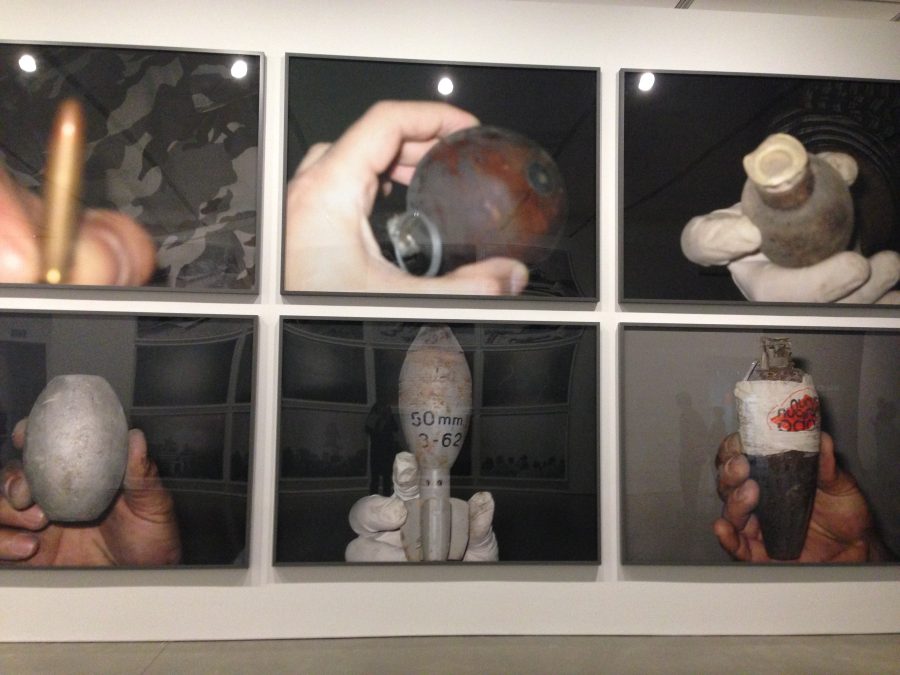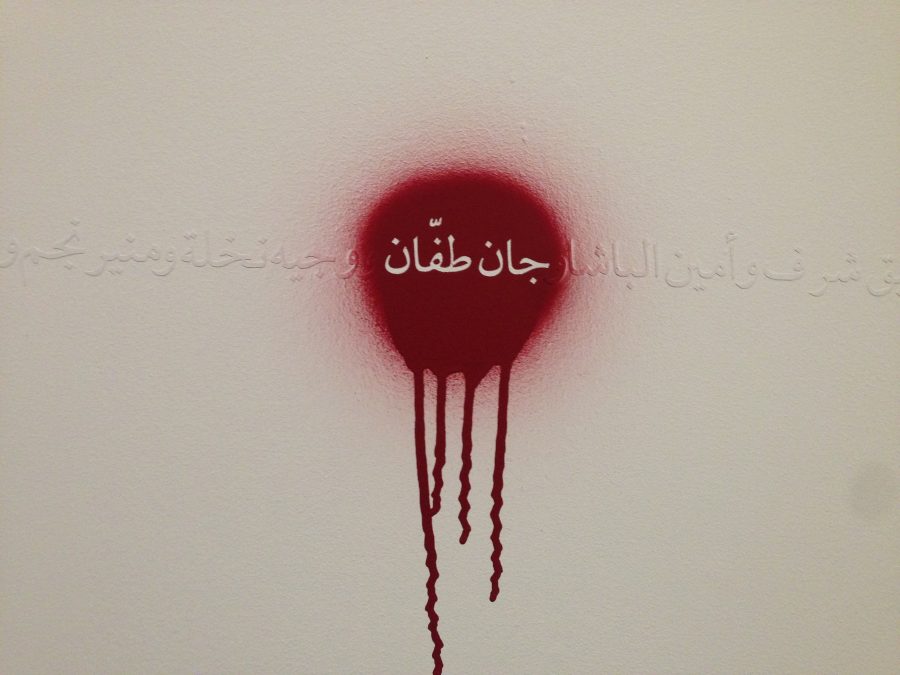Most of us wouldn’t hesitate to say that we know better than to trust everything we read or see. But how aware are we really about what we consume as truth?
Since February, the Institute of Contemporary Art, Boston (ICA) in the Seaport District has been home to the first North American display of Lebanese artist Walid Raad’s world famous exhibit. Raad’s personal experience with warring nations is nothing to be contested. As explained on a wall by the entrance of the exhibit, Raad grew up in Lebanon during its Civil War from 1975-1991. The exhibit is divided into works from two major projects: “The Atlas Group” (1989-2004) and “Scratching on things I could disavow” (2007-ongoing).
Raad’s canvas is historical archive, on which he paints expected images of the Middle East’s wartime violence and wreckage. Using a combination of sculpture, collages, videos, and photograph sets, Raad shows viewers the Middle East the way we expect to see it—car bombs, bullet-ridden buildings, and war weapons. One of the most chilling spreads, for instance, is a six-piece magnified spread of a hand holding various grenades, usually out of focus. The eerie piece, as with the others, is captioned with details about scientists, researchers, and members of the Lebanese army collecting artifacts for a historical research institute known at The Atlas Group. The captions are thoroughly detailed, even including a section labeled “Category_File_Type_Plates” where the file title is placed.
“In 1991, after fourteen years in the Lebanese Communist Party, I was folded into the Lebanese Army’s Ammunition and Explosives division. Months into my new assignment, I found myself unable to remember the names of the thousands of explosive devices I was meant to master. I began to photograph them, hoping that the photographs would aid my memory,” the caption reads. These are the words of Hannah Mrad, who donated photos of explosives to The Atlas Group in 1993.
All in all, a pretty self-evident catalog of wartime savagery, right?
Without doing any research on Raad’s work beforehand, you have no reason to doubt the documents, captions, names, and organizations. But the truth is: everything in Raad’s collection is entirely fiction. The Atlas Group does not exist, and neither does Hannah Mrad and the countless other soldiers and scientists referenced in the exhibit. Realizing the truth about Raad’s work may be disorienting. In the United States, where we are repeatedly reminded of our freedoms and supposed ability to think for ourselves, we may not realize the subtle ways our perceptions of reality are altered by dominant narratives and images.
Raad plays with the idea of authority—the role that self-assured captions and a place on a gallery wall has in our tendency to trust a voice as an expert.
In some portions of the exhibit, Raad is more overt in his bending of reality. One series is called “We decided to let them say ‘we are convinced’ twice. It was more convincing this way.” Raad clearly alters scenery to include elements that don’t belong. For instance, in one expanse of marsh land, an apparently photoshopped dead body floats in the water. Despite the somewhat obvious irregularities, the piece is haunting and thought-provoking about the way we interact with art.
“Scratching on things I could disavow,” taking up the second half of the gallery room, approaches altered realities through a different medium: sculpture, video, and voice. The exhibit requires listening to an audio walkthrough that can be accessed with your phone. Each piece is explained by Raad himself, including a made-up organization providing funds for internationalist artists. Raad spends an astonishing 40 minutes explaining the way the organization works, giving specific dates, names, and locations—a truly convincing stunt.
Yet his walkthrough gets progressively stranger; at one point, Raad explains that he can communicate telepathically with artists from the future. Again, however, Raad maintains some authority by speaking in his same steady and confident tone, evidencing the power of a self-assured voice.
Raad’s challenge is an important one for everyone to confront, especially with the high-stakes presidential election coming up in the fall. He initiates an important conversation about the subtle ways reality is bent out of shape without our awareness, and the importance of questioning absolutely everything, even art.
The exhibit will only be available for viewing until May 30, so make sure to stop by as soon as possible. Keep in mind that the ICA is free to the public on Thursday nights, and student discounts are available on other nights with a valid school I.D.
A sculpture piece consisting of raised white Arabic writing on a chunk of plaster. The paint resembling blood indicates a correction to the writing made by an artist "from the future."






















































